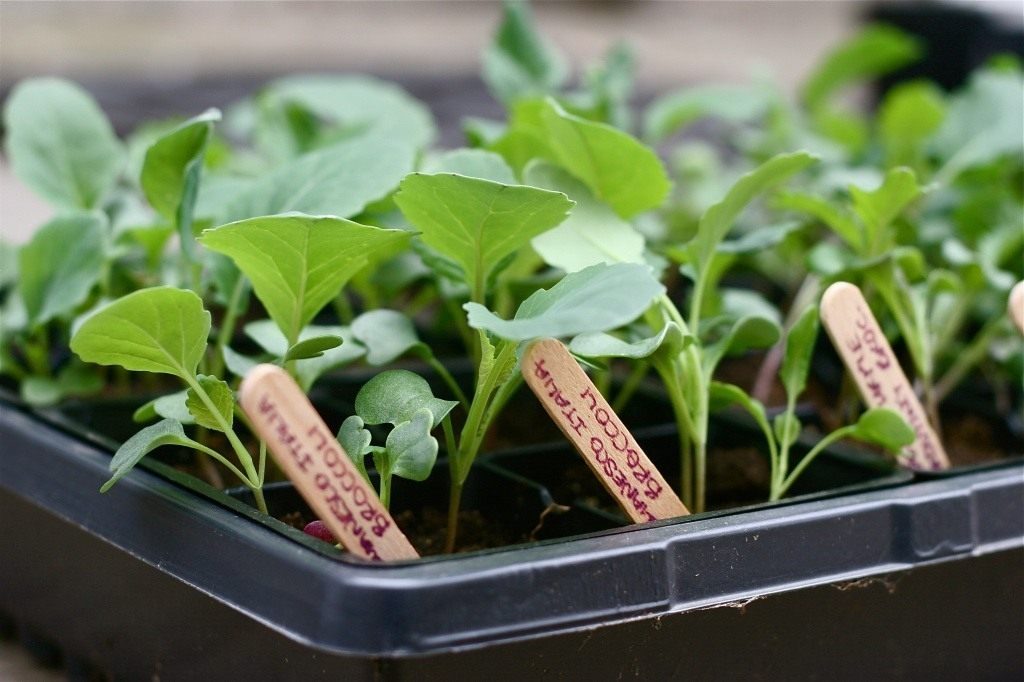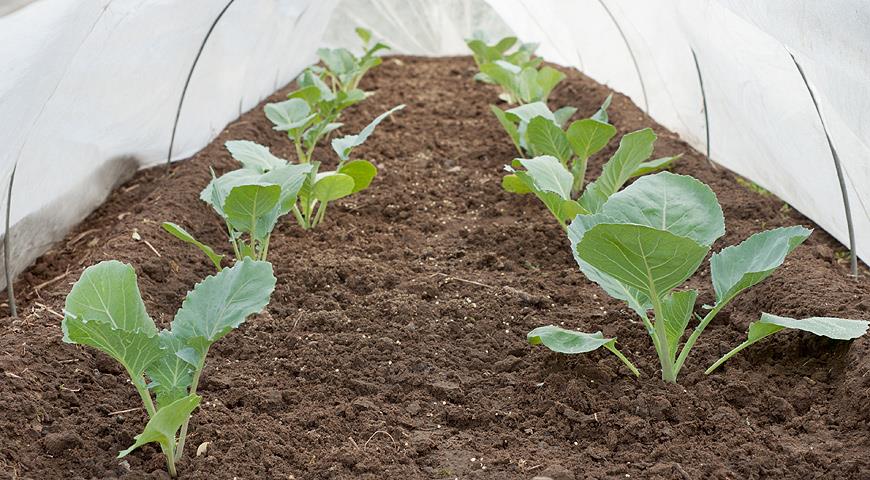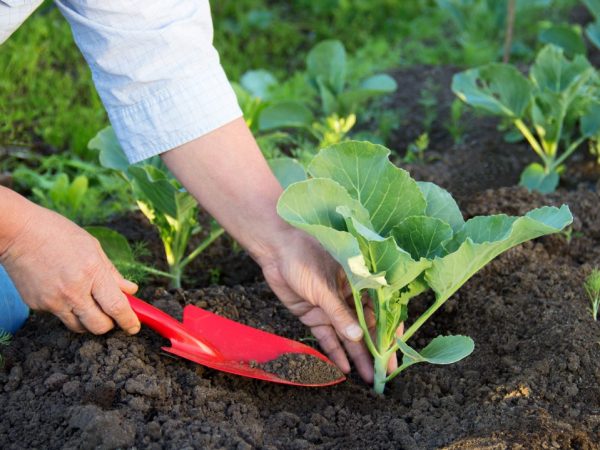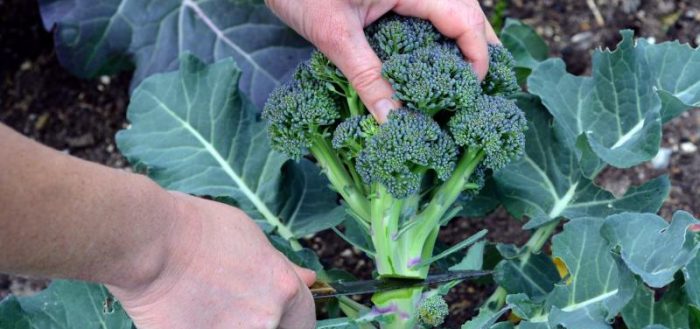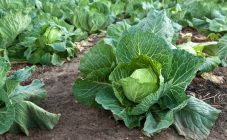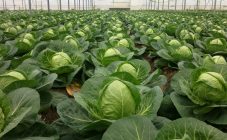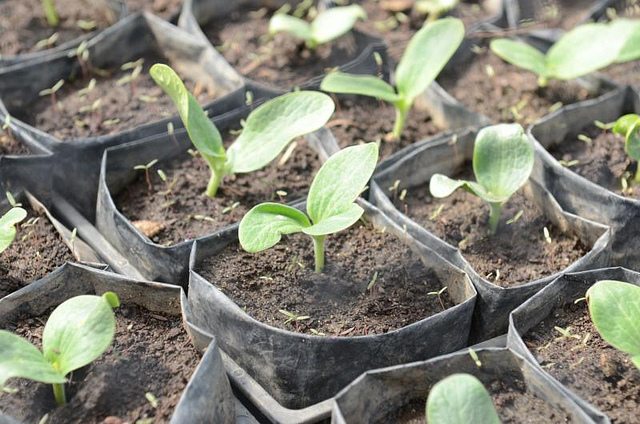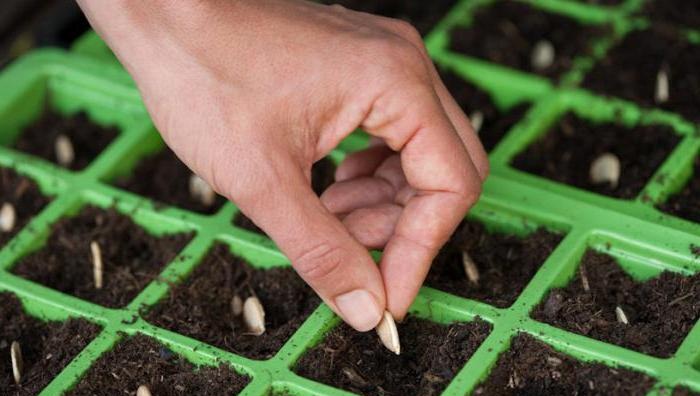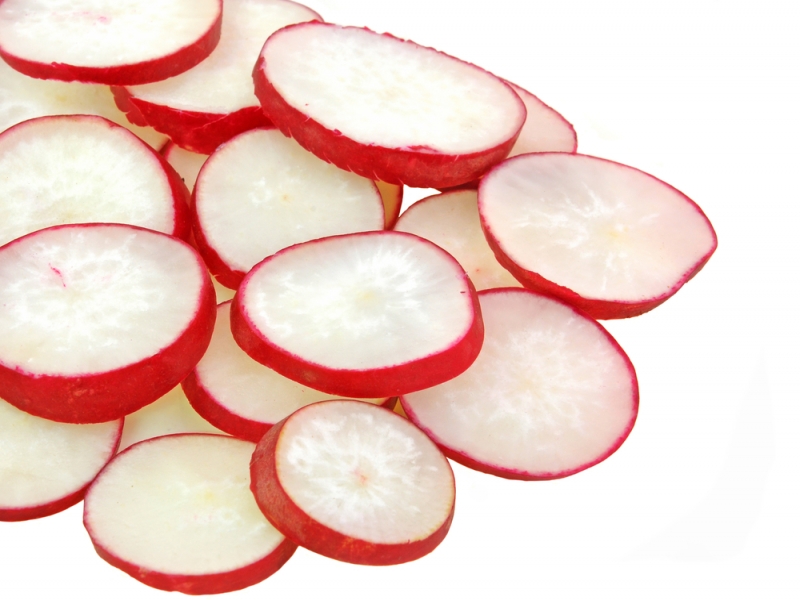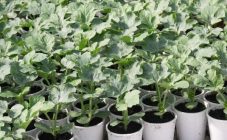Content:
Broccoli cabbage, or asparagus cabbage, is a representative of the cabbage family, in which not leaf plates are eaten, but unopened inflorescences. This variety is famous for its richness in vitamins and low calorie content. Also, it does not require much care.
Asparagus cabbage is grown as seedlings or seeds are planted directly in open ground. Preparing seedlings allows you to harvest several weeks earlier. The choice of broccoli variety will depend on the local climate. For colder regions, early and mid-season varieties are chosen.
Seed preparation
Presowing treatment is recommended to grow strong plants.
Seed preparation stages:
- The seeds need to be calibrated and disinfected. Having chosen the largest ones, they are placed in a pale pink solution of potassium permanganate.
- Then carry out heating in warm water. Water should have a temperature not higher than 50 ° C. It is enough to hold the seeds for 15 minutes.
- After warming up, the seeds are immersed in cold water for 1 min. This procedure contributes to their early awakening.
- Treatment with growth simulators and fungicides, which will prevent some cabbage diseases and accelerate seed germination. Treatment with biological preparations is carried out for at least 12 hours.
- After these procedures, the material is placed in a refrigerator for a day.
- Before planting seedlings, the seeds are dried at room temperature on a napkin.
Soil preparation
Cabbage is unpretentious to the composition of the soil. You can use ordinary soil taken from the garden and mixed with wood ash (1 bucket of 1 tbsp of ash).
Also, a combination of garden soil, peat, sand and humus is ideal for broccoli cabbage.
Planting material is planted in late March or mid-April. When planting seedlings, it is better to use individual containers so as not to damage the thin stem of the plant when picking. If you have to plant seeds in a common container, you need to maintain an interval of 5 cm between them.
After sowing, the containers should be placed in a warm place with an air temperature of 20 ° C. When sprouts appear, the temperature should be lowered to 10 ° C. This regime is maintained for the first week after the emergence of sprouts. Then the containers are placed in a bright place with a temperature of 16-20 ° C and watered abundantly. The soil should not dry out and become waterlogged.
I dive cabbage seedlings at the age of 2 weeks. The procedure is carried out carefully and carefully so as not to damage the root system. The sprouts should be planted in separate cups or peat pots, which are filled with the same soil as when planting seeds. They moisten the earth, make a deepening. Seedlings are carefully removed from a common container, placed in a separate glass and sprayed from a spray bottle.
Fragile seedlings are shaded so that direct sunlight does not damage them. The air temperature in the room is increased to 22 ° C.Hardening of seedlings should be started 2 weeks before disembarking to a permanent place.
Cabbage is ready for transplanting into beds at the age of 35-40 days in the phase of 5 true leaves.
Optimal conditions for planting broccoli in open ground:
- Seedlings should be at least 40-50 days old.
- The acidity level of the soil should be in the range of 6.5-7.5 pH.
- Planting broccoli seeds in the ground is done in mid or late April. In the northern regions, sowing is carried out in May.
- It is better to plant seeds for seedlings in the first half of March. This will allow for the first harvest in June.
- For planting, choose a loose soil with good drainage. This will keep the black leg off the broccoli.
- Timely harvest.
Planting broccoli in the ground
Planting broccoli cabbage should be in the shade, because it can get sunburn. The optimal soil is a fertile non-acidic soil with a light porous structure and a large amount of humus. If the acidity of the soil fluctuates within the pH range from 3 to 6, liming is necessary. For this, lime or eggshells are used, ground to a powdery state.
It is also worth considering the conditions of the crop rotation. For asparagus cabbage, cabbage, tomatoes, radishes will be negative precursors. Representatives of the last year, such as potatoes, carrots, onions, pumpkin and legumes, will have a good effect on cabbage.
Site preparation
It is worth preparing a plot for cabbage in the fall. When digging, potash-phosphorus fertilizers, manure, superphosphate or potassium nitrate are applied.
Planting cabbage seedlings
How to plant broccoli in open ground with seedlings? Suitable conditions for planting are evening and cloudy weather. First, make holes 30 cm deep and watered well. Broccoli must be planted at an interval of 40 cm.The distance between the rows should be at least 50-60 cm.
Then the seedlings are carefully removed from the container along with an earthen lump. The sprout is placed in the hole until the first leaves. To facilitate the maintenance of plantings, the beds are covered with a layer of mulch. It will help to retain moisture in the soil and keep the plants from overheating.
Suitable for mulch:
- dried herb,
- chopped straw,
- wood shavings.
Caring for broccoli cabbage
After planting seedlings, it is important to monitor the weather changes. If the temperature has dropped (even two degrees of frost can have a detrimental effect on the seedlings), cover the seedlings with agrofibre, glass jars or cut plastic bottles. It is important not to forget to open the seedlings when the weather improves.
Caring for cabbage includes regular weeding and loosening. Timely watering and weed management will improve the quality of your crop.
Plants should be watered at least once a week. In the hot period, in addition to increased watering, the air around the plants is sprayed. After watering or precipitation, the soil must be loosened.
Broccoli is fed three times per season:
- A couple of weeks after planting the seedlings, mullein or chicken droppings are used. For 1 bucket of water, use 250 g of mullein. Chicken droppings are diluted with water in a ratio of 1:20. About 1 liter is consumed per 1 m².
- 2-3 weeks after the first feeding, the cabbage is fertilized with saltpeter. To prepare the solution, 20 g of nitrate is dissolved in a bucket of water. For 1 m² use 1 liter of solution.
- For the third feeding, which is carried out during the period when the first inflorescences appear, mix 1 tbsp.spoon of suphosphate and 2 teaspoons of potassium sulfate in a bucket of water. Consumption rate for 1 m² - 1.5 liters.
Before harvesting, each plant is fertilized with 1 liter of nitroammofoska solution (for 1 bucket of water, 1 tbsp. A spoonful of powder). This will ensure stable side head growth. After 7-10 days, 200 g of wood ash is added under each bush.
When caring for plants, it is important to prevent diseases and pests. Broccoli cabbage is most often attacked by cabbage butterflies, aphids and slugs. She can also suffer from blackleg, rot, mosaic or peronosporosis. When the first signs of disease appear, the affected cabbage is pulled out and chemicals are used.
Planting broccoli cabbage in open ground with seedlings is an easy task. The secrets of getting a large harvest of this vitamin vegetable are simple: proper care, moderate watering, timely feeding and cutting off cabbage heads. Growing seedlings will allow you to see strong plants in the beds and speed up the process of harvesting.
